『ロシア正教古儀式派の歴史と文化』~ドストエフスキーは無神論者で革命家?ドストエフスキーへの誤解について考える
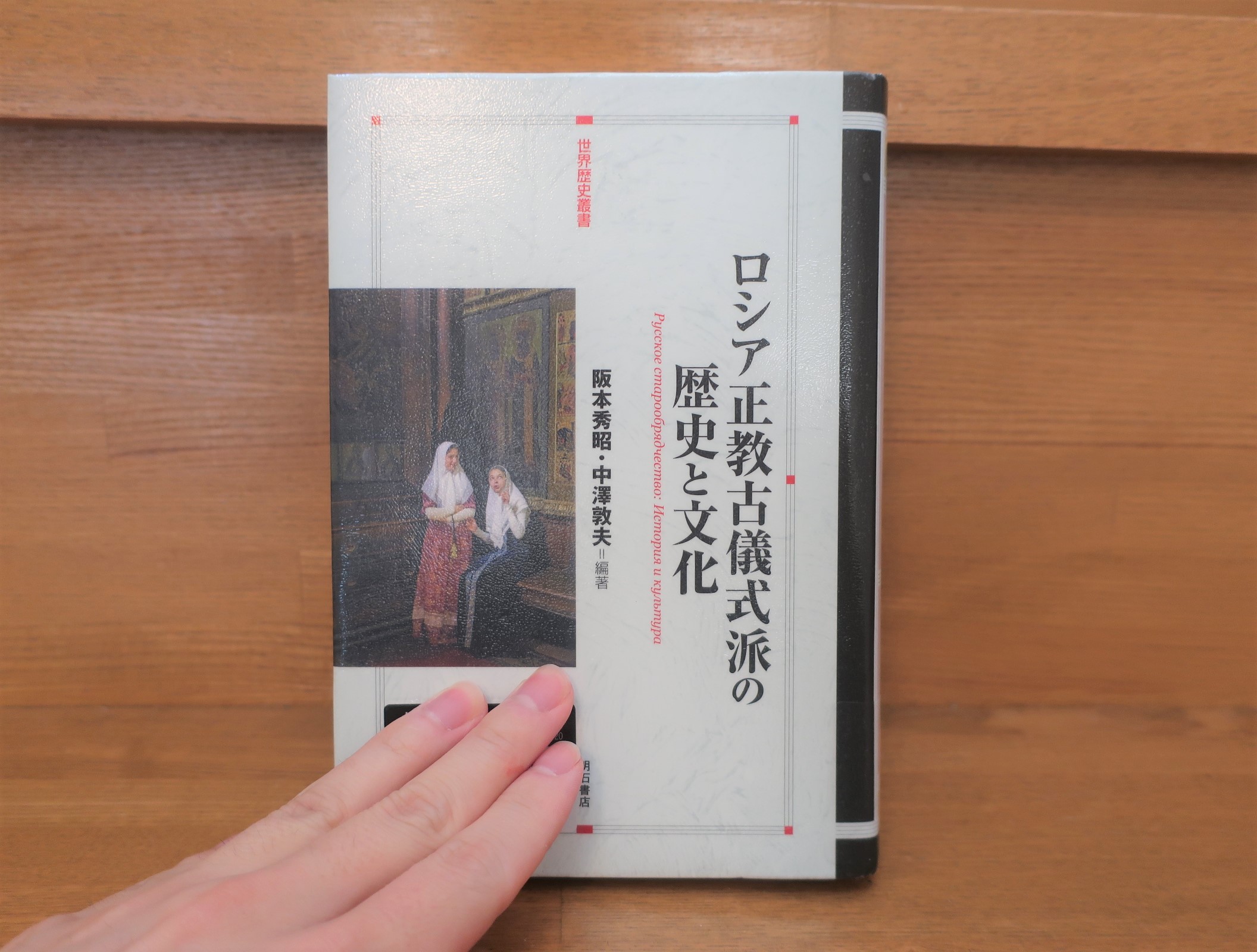
はじめに
ロシア正教の教義や歴史を学ぶ上で避けて通れないのが古儀式派(分離派)と呼ばれる存在です。この分離派はロシア語で「ラスコーリニキ」といいます。
「ラスコーリニキ」といえばもしかするとピンとくる方もおられるかもしれません。
実はドストエフスキーの『罪と罰』の主人公ラスコーリニコフの名はこの「ラスコーリニキ」から来ていると言われています。
とはいえ、ラスコーリニコフ自身は古儀式派(分離派)ではなく、あくまでそれを暗示させる名前であるということだけなのでそこは深読みしすぎるのは危険であると解説されています。
さて、この古儀式派というのがロシアの宗教史を語る上でものすごく重要で、これを知っているか知らないかでロシア文学の見え方ががらっと変わってきます。というのも、ドストエフスキーやトルストイなど、ロシアの文学者がどのようにキリスト教を見ているかがこの歴史をふまえていないと見えてこなくなるからです。
この記事ではまず『ロシア正教古儀式派の歴史と文化』を参考にロシアの宗教事情を見ていきます。
その後「ドストエフスキーは無神論者で革命家?ドストエフスキーへの誤解について考える」というテーマで「おわりに」でお話ししていきます。
「おわりに」まではちょっと長くなってしまいますが「ドストエフスキーは無神論者で革命家か」という問題を考える上で非常に重要なことをお話ししていきますので、さらっとでも結構ですので読んで頂けると幸いです。
古儀式派(分離派)とは
そもそも古儀式派とは一体何なのかと言いますと、名前の通り古くからの儀式を守る宗派のことです。
この宗派が生まれるきっかけとなったのは1653年、当時のロシア皇帝と手を組んだロシア正教会の総主教ニーコンの改革に遡ることになります。
ニーコンは祈りの仕方をこれまでの伝統的なロシア式のものからヨーロッパ的なギリシャ式のものに変更しようとしたのです。
その例を挙げてみますと、十字を切るとき二本指でしていたものを三本指にするとか、お祈りの時の拝礼の仕方を膝をつけた跪拝から、腰を折るだけの祈りにするなど、様々なものに及びました。
ですがそれに対し熱心な信仰者は強く反発しました。
二本指か三本指の違いは私達現代日本人の感覚からするとそこまで重大な違いには思えないかもしれません。
しかしロシア正教会の教えというのは「正しい教え(祈り)によって救われていくこと」に重きを置くキリスト教です。
ですのでもしここで修正を加えてしまったとしたら、これまでの祈りが誤りであるということになってしまうのです。
だとすればこれまでの祈りとは何だったのか?私たちは間違った祈りをしていたのだから神に背いていたのかという必然的な疑問が生まれてきます。
そしてロシア人は伝統を重んじる精神性が強く、そう簡単には新たなやり方を認めようとはしませんでした。
そのため古くからの伝統を守ろうという人々は新たな祈りの仕方を強制しようとする総主教ニーコンの改革はキリストに反抗する悪魔の所業だと考えるようになっていったのです。
こうして総主教ニーコンに反対する一派が生まれ、のちにロシア正教会から異端とされ古儀式派または分離派と呼ばれるようになっていきました。
これはかなりざっくりとした解説で実際はもっと複雑な紆余曲折を経て、古儀式派というものの歴史が生まれてくるのですが、とりあえずはおおまかにお話しさせて頂きました。
そしてそんな古儀式派(分離派)について非常に詳しく丁寧に解説をしてくれるのが本日紹介する『ロシア正教古儀式派の歴史と文化』という本です。
阪本秀昭・中澤敦夫編著 明石書店『ロシア正教古儀式派の歴史と文化』概要と感想
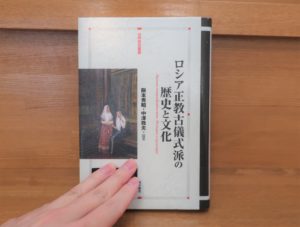
Amazonの商品紹介にはこの本について次のように書かれています。
17世紀半ばのロシア正教の教会改革による宗教分裂は、ロシア社会と国民精神の分裂をもたらし「古儀式派」と呼ばれる分派を生み出した。ロシア理解はそれへの深い認識なしには不可能といってよい。本書は古儀式派に関する初めての概説書。
Amazon商品紹介ページより
ドストエフスキーの解説書などでも時折意味深げに登場する「分離派」という言葉。
「分離派」というのは「古儀式派」の法律的な用語としてロシアでは使われていたようで、「分離派」と「古儀式派」はほぼ同義として用いてもよさそうです。
そしてこの本によりますと、これまで古儀式派について詳しく書かれた参考書が日本を含めて世界的にもずっとなかったというのが現状だったようです。
というのもソ連政権下では宗教に関する研究はタブー視され、特にロシア正教会から異端視された古儀式派に対しては特にそのような風潮が強かったとこの本では述べられています。
しかしソ連の崩壊後、研究は急速に進み、今では多くの研究者が古儀式派についての研究成果を発表しています。
この本ではそんな近年急速に研究が進んだ古儀式派についてわかりやすく概説してくれます。
古儀式派とはそもそも何なのかを知るには最適な書です。
単に教義上の問題だけではなく、政治上の問題や歴史や文化の問題、そして何よりドストエフスキーら文学者への影響もこの本は解説してくれていますので非常に興味深いです。
私は専門家ではありませんのでこれ以上の言及は控えますが、せっかくですのでこの本に書かれている興味深い箇所をいくつかご紹介します。
キリスト教的終末論と勤労原理
古儀式派教徒の間に見られる勤労原理、禁欲主義を説明するには閉鎖的集団における規律主義、儀礼主義をあげるだけでは不十分であろう。
この点において忘れてはならないのが彼らは切迫した黙示録的終末論、すなわちアンチキリスト(反キリスト)論の信奉者であったことである。
古儀式派教徒はいずれもアンチキリストの到来を強く意識し、それに備えようとしていた。古儀式派教徒の救済論は、それとの対抗関係の中で鍛え上げられ、その中で独自の禁欲主義も形成されていった。
古儀式派教徒の間において黙示論的終末論が強まったのは、ニーコンの宗教改革とそれに続く古儀式派に対する弾圧の時期であった。
初期の古儀式派運動の指導者の中で終末論を明瞭かつ首尾一貫して展開したのは長司祭ラーザリ(?~一六八二)であった。彼は時の皇帝アレクセイ・ミハイロヴィチにあてた請願書(一六六八年)の中で、ニーコンの改革によってもたらされた儀礼や礼拝実践における改革は、いかに父祖の信仰伝統から逸脱しているかを詳細に述べ、もしそれらの誤りが訂正されないならば、破局を招きかねないと警告した。
請願書を貫いていたライトモチーフは、それらの逸脱は真の信仰からの後退であり、やがて「世の終わり」が到来するであろうという思想であった。ラーザリや長司祭アヴァクーム(一六二〇~一六八二)らの初期の指導者の言説は後の時代の運動に大きな影響を与え、いくつもの古儀式派内の潮流を生み出す源泉となった。
多くの古儀式派教徒はピョートル大帝の時代にもアンチキリストの支配を感じ取った。ピョートル帝は暦や文字の改革を実施し、生活風俗の西欧化を強制し、古儀式派教徒には二重税を課すなど税制を強化したばかりでなく、人口調査によって古儀式派教徒の人口も把握しようとした。
古儀式派教徒は大帝に代表される皇帝の座や総主教の背後にアンチキリストの霊が働いていると捉えるか、またはピョートルこそ目に見えるアンチキリストそのものであると捉え、一気に終末論的不安を募らせていった。
ピョートルは古儀式派に対する二重税によってその経済力を国庫のためにすくい取ろうとする一方で、彼らの都市内での居住を許容した。この意味で彼は実際には古儀式派を半合法化したのであった。
ところがアンチキリストの到来に関する教説は、帝政国家とロシア正教そのものに対する不信感と恐怖をますます強めていった。この不安と恐怖のもとにあって彼らはそこからの救済を願わずにはいられなかった。
救済のためには大きく分けて二つの道があった。一つはアンチキリスト、すなわち政府や正教会の手にかかることから徹底的に逃れることであり、具体的には集団的焼身自殺、あるいは辺境地方や国外への逃亡であった。
もう一つは世俗世界において厳しい禁欲的生活を送り、勤勉な労働に生きることによって、アンチキリストの支配する、あるいはそれが忍び寄る世界と対抗することを可能とする独自の規律ある社会を自らの努力によって築き上げる道であった。
この方法はもともと一七世紀末の白海に近い北方ヴィグにおける修道隠舎周辺での実践から始まり、積極的な経済活動を展開しながら次第に各地に波及していった。禁欲的生活、勤勉で誠実な勤労態度は魂の救済を目的としていた。
古儀式派教徒はアンチキリストの蔭が覆うこの世に対抗するために、ロシア北方の辺境の地に神意に守られた理想郷を産み出す闘いに邁進した。
北方において修道院的禁欲のうちに祈りと勤労の生活が繰り広げられ、やがては世俗的禁欲の生活態度を身に着けたエネルギーに満ち溢れた信徒たちが通商と商業網を広めるため全ロシアに拡散していった。
『ロシア正教古儀式派の歴史と文化』阪本秀昭・中澤敦夫編著P157-158
※一部改行しました
アンチキリストの到来によってこの世は終末を迎えるという思想が古儀式派には根強くありました。
そのアンチキリストは総主教ニーコンであり、あのピョートル帝でもあったのです。
ピョートル帝といえば、以前の「サンクトペテルブルクを作った男ピョートル大帝―ロシア版明治維新を断行した規格外の皇帝に迫る」の記事で紹介しましたが、彼こそ古くからのロシアを捨て去り、ロシアを西欧化させ、サンクトペテルブルクを作った皇帝でした。
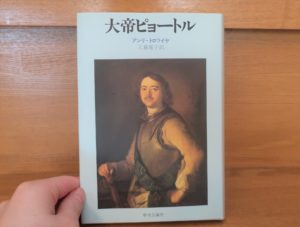
古儀式派にとって古くからのロシアの象徴「モスクワ」を捨て去り、カトリックたるヨーロッパ諸国の真似をしてサンクトペテルブルクの街を作るなど、アンチキリスト以外の何物でもありませんでした。
古儀式派は古くからのロシアを守ろうとする保守的な立場であるというのが上の引用からもなんとなく感じて頂けると思います。
そしてもう一つ、今度はドストエフスキーと古儀式派との関係について引用します。
民衆的信仰者の現像(ドストエフスキー)
ドストエフスキーの文学には四〇年代から鞭身派などのセクトへの関心がうかがえるが、彼が古儀式派を正面から描くのは、『死の家の記録』(一八六二)が最初である。
政治犯としてのシべリア流刑体験に基づいたこの回想記風の監獄小説には、孤高の姿勢を保ちながら周囲の尊敬と信頼を集める古儀式派の老囚人が登場する。
帰一派への転向要請を拒否して無期懲役になったスタロドゥービエの旧教徒をモデルとした人物で、作中では政府が建てた帰一派の教会に放火した「信仰のための受難者」という設定である。だが作者はこの人物が過激な経歴とは裏腹にきわめて温厚で、他の古儀式派が陥っている形式主義や高慢さをもまぬがれていると強調している。
「この人物としばらく一緒に暮らしてみれば、諸君も思わず自分に問いかけることだろう―こんな子供のようにおとなしくて静かな人間が、いったいどうして反乱者などになり得たのか、と。
私は何度か彼と『信仰論』を始めた。彼は自分の信念を一歩たりとも譲ろうとしなかったが、彼の反論には一度として何の悪意も、何の憎しみも含まれていなかった。それなのに彼は教会を破壊して、しかもその行為を否認しようとはしなかったのだ。
その信念のあり方からして、彼は自分の行動とその結果引き受けた『苦しみ』を、名誉ある事柄と見なして当然だったように思える。
だがどんなにじっくり眺めても、どんなに細かく観察しても、彼の内には一度として虚栄心のかけらさえ見あたらなかった。(……)気立てはきわめて社交性に富み、ほがらかでよく笑った。それも囚人たちがよく見せる無礼で小馬鹿にしたような笑みではなく、明るくて静かな笑い方であり、そこには子供のような純朴さがあふれていて、なぜかそれがとりわけ白髪頭に似合うのだった。(……)老人は監獄中の人間から尊敬されていたが、それを鼻にかけるところは少しもなかった」。
このような人物描写は、実体験の産物というばかりでなく、近代ロシア史の主流からはじき出された古儀式派のもとにこそロシア本来の価値観が残っているという、先述の「土壌主義」の理念の投影とも見るべきかもしれない。いずれにせよ、トルストイが高貴なる野蛮人を見た古儀式派に、ドストエフスキーは民衆的な信仰者の理想型を見ているようだ。
ドストエフスキーのこれ以降の作品に古儀式派の詳しいスケッチは登場しないが、古儀式派への関心は、以降の作品にもいろいろな形で反映している。
『罪と罰』には、リャザン県ザライスクの「二百年来」の有名な家系に属し、「分離派」のニュアンスを含んだ姓を持つ青年ラスコーリニコフと、同じザライスク出身で逃亡派に属するペンキ職人ミコルカという、二人の古儀式派を連想させる人物が登場する。
この作品の「分離」という概念は、ある種の宗教的・思想的熱狂や権威への反逆を含意するようにも見えるし、また一面では近代ロシアの精神文化自体の不幸な分裂を示唆するようにも思える。
『白痴』では、モスクワの古儀式派のロゴーシスコエ墓地を連想させる名前を持つロゴージンが、商人の父親の代から古儀式派ないし去勢派とかかわりを持っているし、主人公ムィシキンはエパンチンの夜会で「足もとに土地のない人間には神もいない」というどこかの古儀式派の商人の言葉を引用しながらスピーチをする。総じてこの作品は、カトリック、無神論・ニヒリズム、正教の対抗といった側面を持ち、古儀式派やセクトもそこでロシア的信仰の形として重要なファクターとなっている。
七〇年代のドストエフスキーは明らかに古儀式派との和解によるロシア教会の再統合とでも呼ぶべき理念に惹かれており、その文脈で、帰一派のステイタスを上げようという宗教教育愛好会での議論に興味を示している。
七六年、バルカンの露土戦争に際してモスクワの古儀式派が衛生部隊を編成し、セルビアに派遣したというニュースも、彼は東方正教会の再団結を示唆するものとして歓迎した。『カラマーゾフの兄弟』のゾシマ長老に見られる宗教的な寛容のテーマも、ロシア教会再統合論とどこかでつながっているようだ。
こうして様々な方向に展開されるロシア的信仰精神の復興とでもいうべきテーマにとって、オムスク監獄の穏やかな古儀式派像が、一つの出発点となっているように思える。
『ロシア正教古儀式派の歴史と文化』阪本秀昭・中澤敦夫編著P373-376
※一部改行しました
ドストエフスキーと古儀式派のつながりもこの解説を読むとなんら過激なものではなく、ロシア民衆の素朴な精神性を愛したドストエフスキーが彼らに関心を持つのも自然なように思えてきます。
おわりに―ドストエフスキーは無神論者で革命家?ドストエフスキーへの誤解について考える
『ロシア正教古儀式派の歴史と文化』を読んで改めて感じたことがあります。
それは、
「ドストエフスキーはキリスト教徒であった」
という言葉は非常に難しい問題をはらんでいるということです。
これまで当ブログでもロシアの歴史や文化を見てきましたが、歴史や社会は複雑です。
キリスト教といってもカトリックとプロテスタントが全く違う文化として存在しているように、ロシア正教というものもキリスト教としてひとまとめにして言ってしまうのはなかなか難しい問題なのです。
さらに難しいのはロシア正教と言ってもそこには様々な宗派があり、同じ宗派の中でも人それぞれ心に感じているものは決して同じではないということです。
このことは遠い外国文化のことを考えるとなかなか見えにくいものではありますが、私達日本人を例にとって考えてみるとすぐにぴんとくると思います。
「私上田隆弘は仏教徒です」
と仮に言ったとしましょう。
ですが私はたしかに仏教徒ですが浄土真宗の僧侶ですし、さらにその中でも真宗木辺派のお寺にいます。さらには真宗木辺派の中でも私は様々な宗教に興味があって・・・とどんどん細分化されていきます。
たしかに私は仏教徒ではありますが禅宗の信者ではありませんし、比叡山のお坊さんでもありません。
同じ仏教徒と言えども、それぞれ教義も祈りの仕方も全く違います。
それをひとまとめにして「上田は仏教徒である」と言ってしまい、それをすべてにおいて当てはめてしまうのでは大事なことを見落としてしまいます。
それはドストエフスキーも一緒です。
「ドストエフスキーは熱心なキリスト教徒だった」
こう言うのは簡単ですが、ではどんな信仰を持っていたのかということはかなり注意して考えていかなければならないのです。例えばですが、これで一歩解釈がずれてしまえばドストエフスキーは無神論者だと決めつけることにもなってしまうのです。
座禅を組まない宗派である浄土真宗の私に置き換えれば、「座禅を組まないなら仏教徒じゃない。上田は仏様を信じていない人間なのだ」と他人から決めつけられるようなものです。
この辺りがドストエフスキーが誤解されやすい大きな原因なのではないかと私は思います。
そしてもう1点。
「ドストエフスキーは無神論者であり、革命思想を持った皇帝暗殺主義者だった」という説についてです。
これは日本でもよく聞かれる話なのですが、これはソ連時代、ソ連のイデオロギー下で発表された論説が基になっていることが多いです。
『ロシア正教古儀式派の歴史と文化』はソ連崩壊後にようやく研究が進んできた古儀式派学者の研究成果をまとめたものだということは先にもお話ししました。
ソ連では宗教研究はタブーです。異端視された古儀式派はなおさらタブーです。
さらにソ連は徹底したイデオロギー統制を強いますので、ソ連政権に都合のよい言説しか通りません。
もちろん、ドストエフスキーもそれに利用されます。
ソ連からすればドストエフスキーが無神論者で、なおかつ皇帝を殺して帝政打倒を画策する革命家であるほうが都合がよいのです。
ソ連の研究者は、はなから彼の宗教的部分は抹殺、あるいは曲解してドストエフスキー像を作り上げます。
そしてそれが高名な学者の論説だからと世の中に出回り、既成事実になっていく・・・
悲しいですがそれが世の中の現実なのかもしれません。
もちろんソ連時代の研究がすべて間違っていると私が言いたいわけではありません。
ですが、研究というのもその研究がなされた時代背景というものも考慮にいれないといけないということをこの本を読んで改めて考えさせられたということなのです。
幸い、現在はソ連崩壊もあり状況は変わり、様々な研究も出て来ているようなのでドストエフスキーのこうした誤解が解けることを私は願っております。
繰り返しますが私はソ連の研究をすべて否定しているわけではありません。ソ連時代の優秀な学者さんたちが積み上げてきた歴史や研究成果がどれだけ私たちにとって大切なものであるかは重々承知しています。彼らの実績のおかげでドストエフスキーが今なお私たちに届けられているという事実を決して軽視しているわけではありません。
ですが、そのすべてを鵜呑みにしてしまうのは危険なのではないかと私は感じたのです。
私はプロの研究者ではないのでこれ以上は申せません。いや、ここまででも僭越なことを言ってしまったかもしれません。また、私が言っていることがすべて正しいとかそういうことを申したいわけではありません。
ですが、ドストエフスキーに感銘を受けた一人として、ドストエフスキーに対して真摯に向き合いたいと私は思い、ここにその思いを書かせて頂いた次第であります。
この思いが少しでも多くの皆様に伝わって頂けましたら嬉しく思います。
「ドストエフスキーは無神論者なのか革命家なのか」という問題については、ドストエーフスキイの会会長で千葉大学名誉教授の木下豊房氏がご著書『ドストエフスキーの作家像』で世に問うているだけではなく、木下先生ご自身のHPでも詳細な解説を掲載されています。
興味のある方はぜひご覧になってみてください。きっと驚かれると思います。
以上、「ドストエフスキーは無神論者で革命家?ドストエフスキーへの誤解について考える『ロシア正教古儀式派の歴史と文化』を読んで」でした。
Amazon商品ページはこちら↓
次の記事はこちら
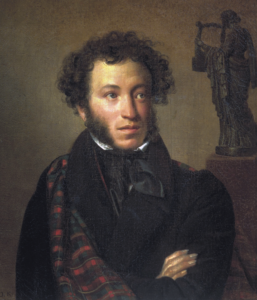
前の記事はこちら
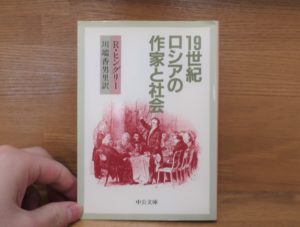
関連記事
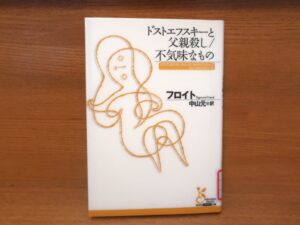
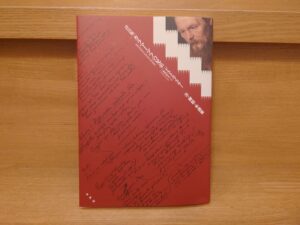
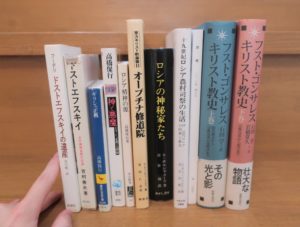
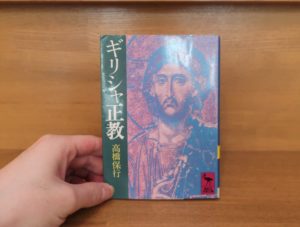
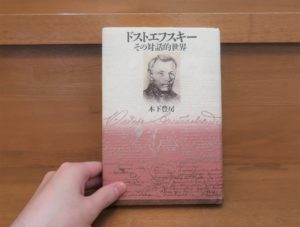
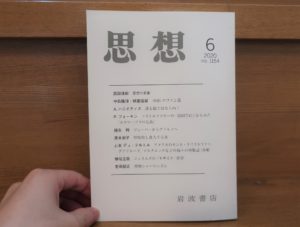
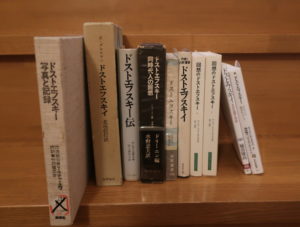
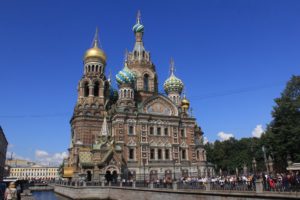
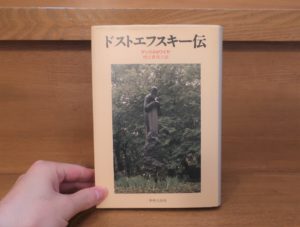
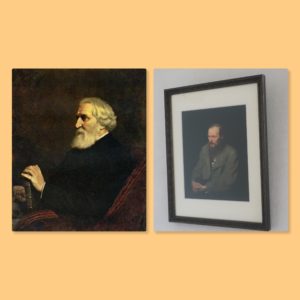

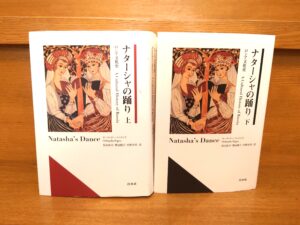

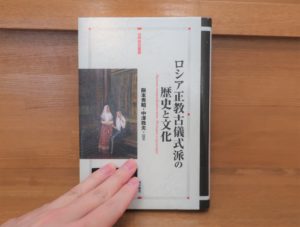
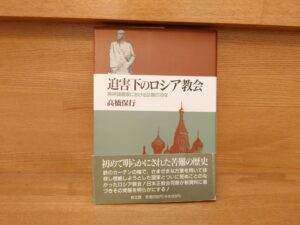
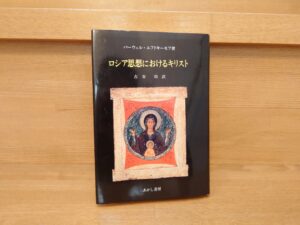
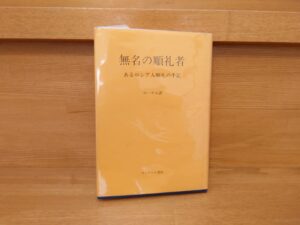
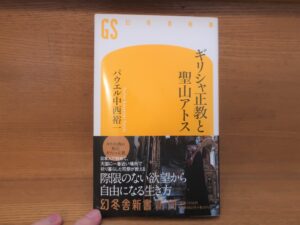
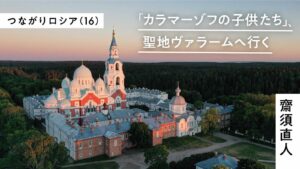
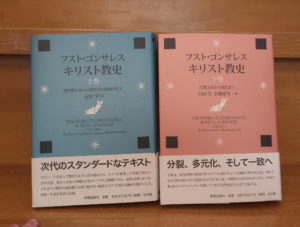
コメント